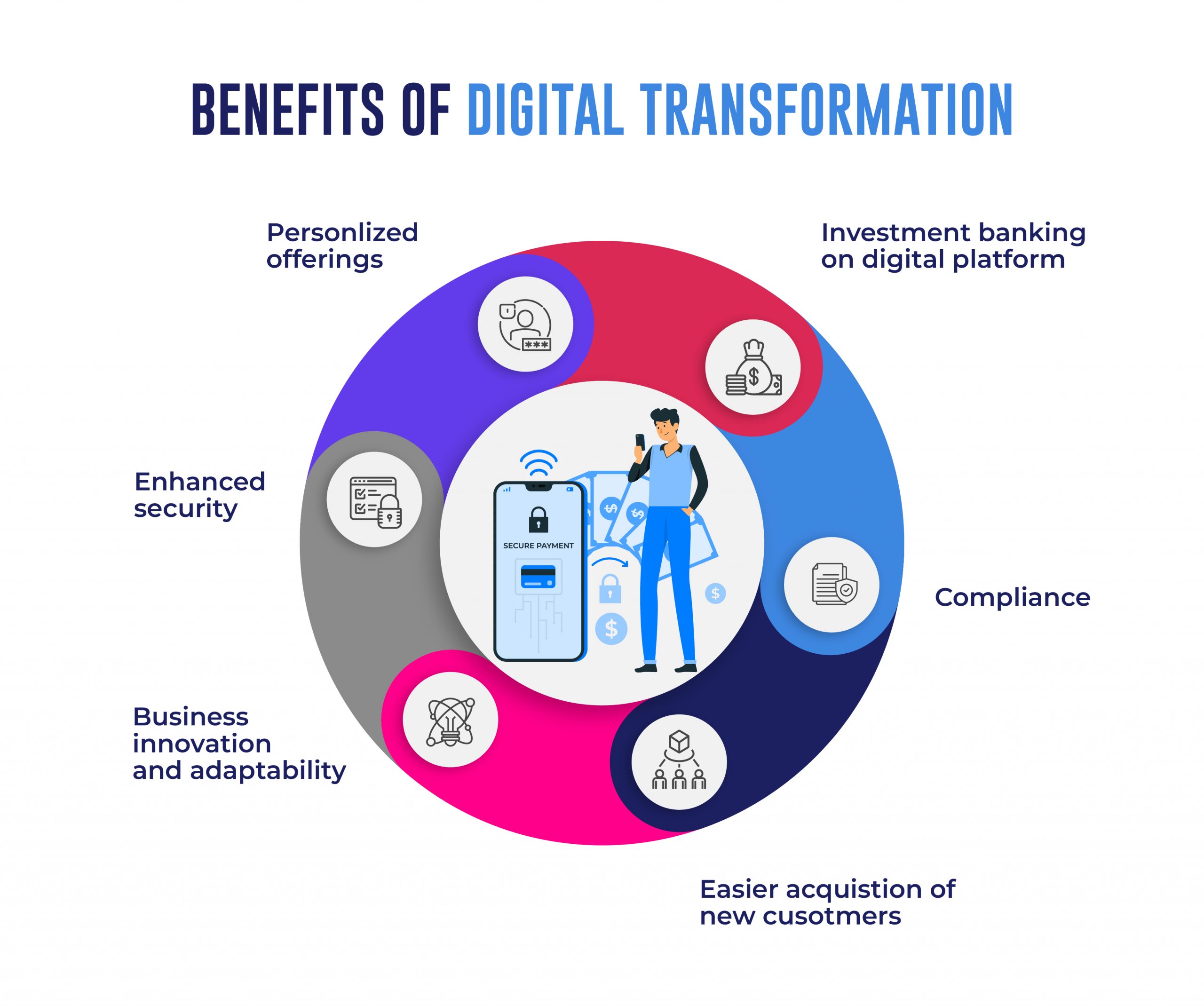In a recent poll, 53% of banks and 69% of credit unions said that technology companies like Apple and Google would be their biggest competitors in 2020. These tech companies are branching into the financial world by making apps for their customers to make payments and banking. Digital transformation is how banks can keep up with these tech companies, keep their customers, and find and follow new ideas.
What does “digital transformation” mean?
Digital transformation replaces legacy systems and traditional methods with new digital technologies to automate manual chores, improve productivity, increase revenue, and give customers a better experience.
Partnering with domain experts in Digital Transformation like Maveric Systems powers banks to create an innovation capital that helps them leapfrog the competition.

Digital Transformation – Business Cases.
Digital channels bring in much revenue for Banks. Banks are transiting to new technology in that digital platforms give them new ways to follow up on leads and make more money. Boston Consulting Group thinks that by 2023, at least 30% of business banks’ income will come from digital. As more customers use digital apps and Internet banking, it becomes easier for banks to keep track of their habits. They can see what resources customers look up most often and send pop-up polls to learn more about users’ financial needs and why they use the technology. Based on this information, banks can offer each customer the best products.
Amping Agility: The financial services business is only sometimes known for being flexible, but it’s more important than ever to respond quickly to economic changes. A bank with a solid digital setup can respond rapidly to crises, like when it has to close branches, work with less staff, or reduce services that can be done in person. An excellent way to change from analog to digital would be to use a “phygital” model. Under this approach, banks would focus on and grow their digital services. The brick-and-mortar sites would stay open, but because the focus is on mobile and online banking, they would have less staff and could close quickly if needed.
People like mobile banking services better: Customers want digital banking options right now, so giving them what they want is the best way to stay competitive. The number of people using mobile and online banking has been going up regularly, but in the spring of 2020, demand went up even among people who used to prefer to bank in person. Deloitte says that people of all ages and countries use internet channels more than branches and ATMs.
Essential Aspects of Digital Transformation in Banking
Omnichannel banking: gives customers an integrated, seamless experience across multiple platforms, such as Internet banking, mobile apps, ATMs, and physical branches.
Personalization: Using data analytics, artificial intelligence (AI), and machine learning (ML) to make goods and services fit the needs and preferences of each customer.
Automation and Process Optimization: Using robotic process automation (RPA) and artificial intelligence (AI) to simplify internal processes, cut costs, and improve performance.
Advanced Security Measures: Using new cybersecurity solutions and methods to protect customer data, stop fraud, and ensure laws are followed.
Data-Driven Decision Making: Using big data analytics and advanced algorithms to make well-informed strategic choices, improve risk management, and drive innovation.
Collaboration with Fintech and Open Banking: Working with fintech startups and supporting genuine banking efforts to encourage innovation, improve customer experiences, and offer more services.
Conclusion
Today, the global age of digitization has changed because of a paradigm shift in technology. In this digital age, technology changes almost every business all the time. Technology has become essential to society and business, from automating jobs to digitizing services, from virtual teamwork to intelligent homes, and cloud computing to data analytics. The finance business is on the front lines of using the digitization power of technology to explore and come up with new ideas. It is also one field that has made the best use of digital technology. One of the most impressive digital changes in the finance business is how many people worldwide have switched from traditional banking to digital banking.
Digital transformation in banking is a significant change that will improve how banks and other financial institutions learn about their customers’ needs, connect with them, and meet them. More specifically, an effective digital transformation starts with knowing digital customer behavior, preferences, choices, likes, dislikes, and stated and unstated needs.
About Maveric Systems
Starting in 2000, Maveric Systems is a niche, domain-led Banking Tech specialist partnering with global banks to solve business challenges through emerging technology. 3000+ tech experts use proven frameworks to empower our customers to navigate a rapidly changing environment, enabling sharper definitions of their goals and measures to achieve them.
Across retail, corporate & wealth management, Maveric accelerates digital transformation through native banking domain expertise, a customer-intimacy-led delivery model, and a vibrant leadership supported by a culture of ownership.
With centers of excellence for Data, Digital, Core Banking, and Quality Engineering, Maveric teams work in 15 countries with regional delivery capabilities in Bangalore, Chennai, Dubai, London, Poland, Riyadh, and Singapore.











